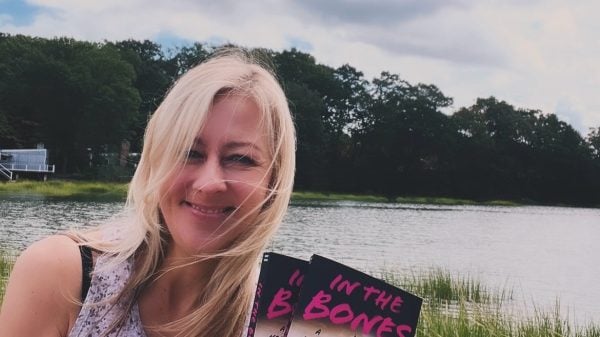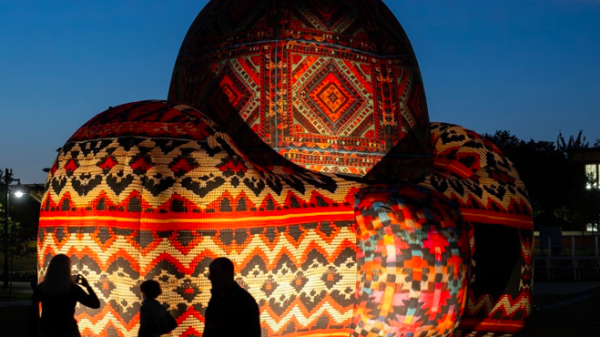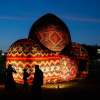Welcome to STYLE Canada‘s Boreal Book Club: a monthly meeting narrated by Erin Catto, (reviewer at Girl Well Read), for bookworms who’re looking to scour new pages. Since we aim to shine a spotlight on all things Canadian in life and style, beauty, and health and wellness, it goes without saying that every instalment of the Boreal Book Club will feature a Canadian author and their latest title. Be sure to use the hashtag #BorealBookClub to share with us on social!
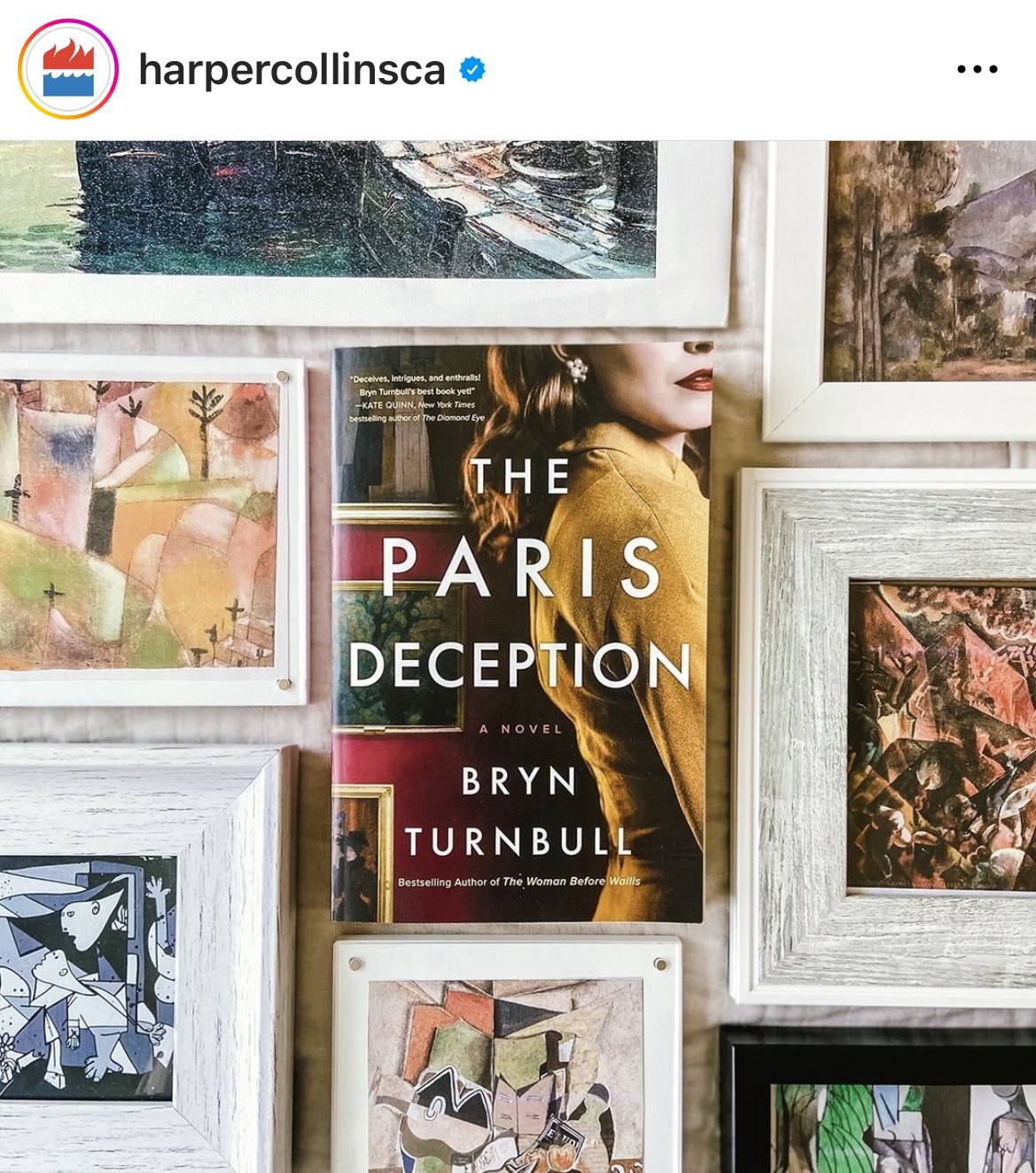
@harpercollinsca via Instagram
Art restorer Sophie Dixon fled Stuttgart with her brother as the Nazi regime gained power in Germany. Three years later, she returns to Berlin in horror to witness Entartete Kunst, the government-sanctioned exhibition and destruction of Germany’s modern art. When her adopted home city of Paris is conquered by the Nazis, Sophie reluctantly accepts an offer to continue her work at the Jeu de Paume Museum under the supervision of the Einsatzstab Reichsleiter Rosenberg, a German art commission that uses the museum as a repository for art they’ve looted from Jewish families.
Fabienne Brandt was a rising star in the Parisian bohemian arts movement until the Nazis put a stop to so-called “degenerate art”. Still mourning the loss of her firebrand husband, she’s resolved to muddle her way through the occupation in whatever way she can—until her estranged sister-in-law Sophie arrives at her door with a stolen painting in hand. Realizing that Paris’s modern art might soon meet the same fate as their counterparts in Entartete Kunst, the two women embark upon a plan to save Paris’s “degenerates”, working beneath the noses of Germany’s top art connoisseurs to replace the paintings in the Jeu de Paume with skillful forgeries—but when Hermann Goering’s handpicked art dealer devises his own plan for the modern artwork in the Jeu de Paume, how long can Sophie and Fabienne sustain their masterful illusion?
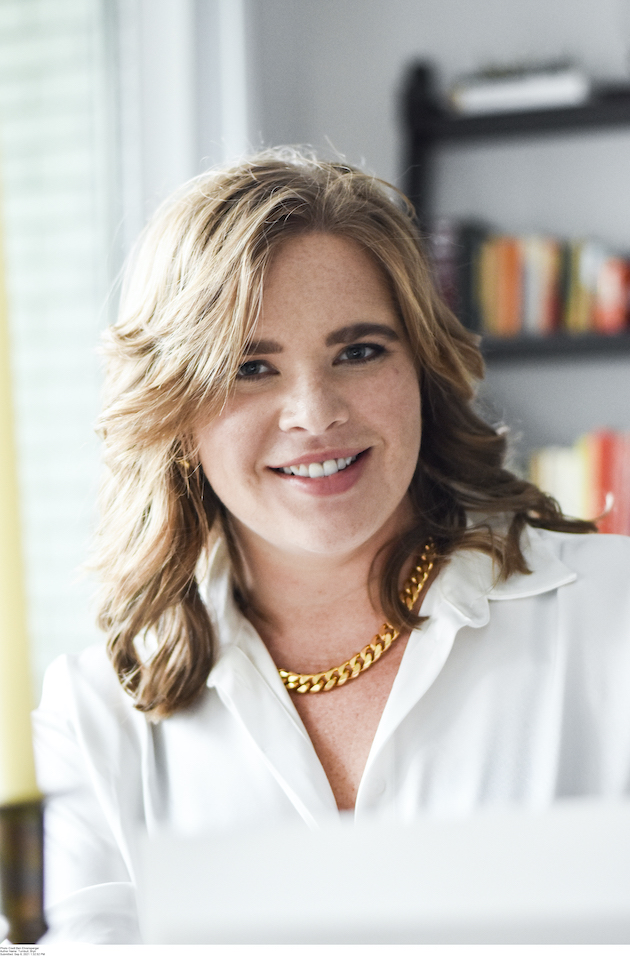
Bryn Turnbull (photo: Ben Ehrensperger)
Fascinating and meticulously researched, Bryn Turnbull’s latest offering isn’t just a story about World War II and the resistance—this book highlights the impact on the art community where it is estimated that during the Second World War, the Nazis looted some 600,000 paintings from Jews. This staggering number makes up almost 20 percent of all of the art in Europe and there are at least 100,000 of which that are still missing today. Hitler’s cleansing of modern art was not only designed to enrich the Third Reich, but also integral to the Holocaust’s goal of eliminating all traces of Jewish identity and culture.
The Paris Deception is told told from the dual perspectives of sisters-in-law who—despite their fragile relationship—have banded together in order to save the modern masterpieces from the Nazis. Turnbull strikes the right balance between fact and fiction with her immersive and compelling writing. The attention to detail is as intricate as one of Fabienne’s forgeries.
This story about bravery, the bonds of friendship, and lost loves is a must read for any historical fiction lover. The Paris Deception sparkles like champagne—highly recommend!
BRYN TURNBULL is an internationally bestselling author of historical fiction. Equipped with a Master of Letters in Creative Writing from the University of St. Andrews, a Master of Professional Communication from Toronto Metropolitan University, and a Bachelor’s degree in English Literature from McGill University, Bryn focuses on finding stories of women lost within the cracks of the historical record.
Her debut novel, The Woman Before Wallis, was named one of the top ten bestselling works of Canadian fiction for 2020 and became an international bestseller. Her second, The Last Grand Duchess, came out in February 2022 and spent eight weeks on the Globe & Mail and Toronto Star bestseller lists. The Paris Deception is her third novel.
Scroll to read Girl Well Read’s exclusive interview with Bryn Turnbull.
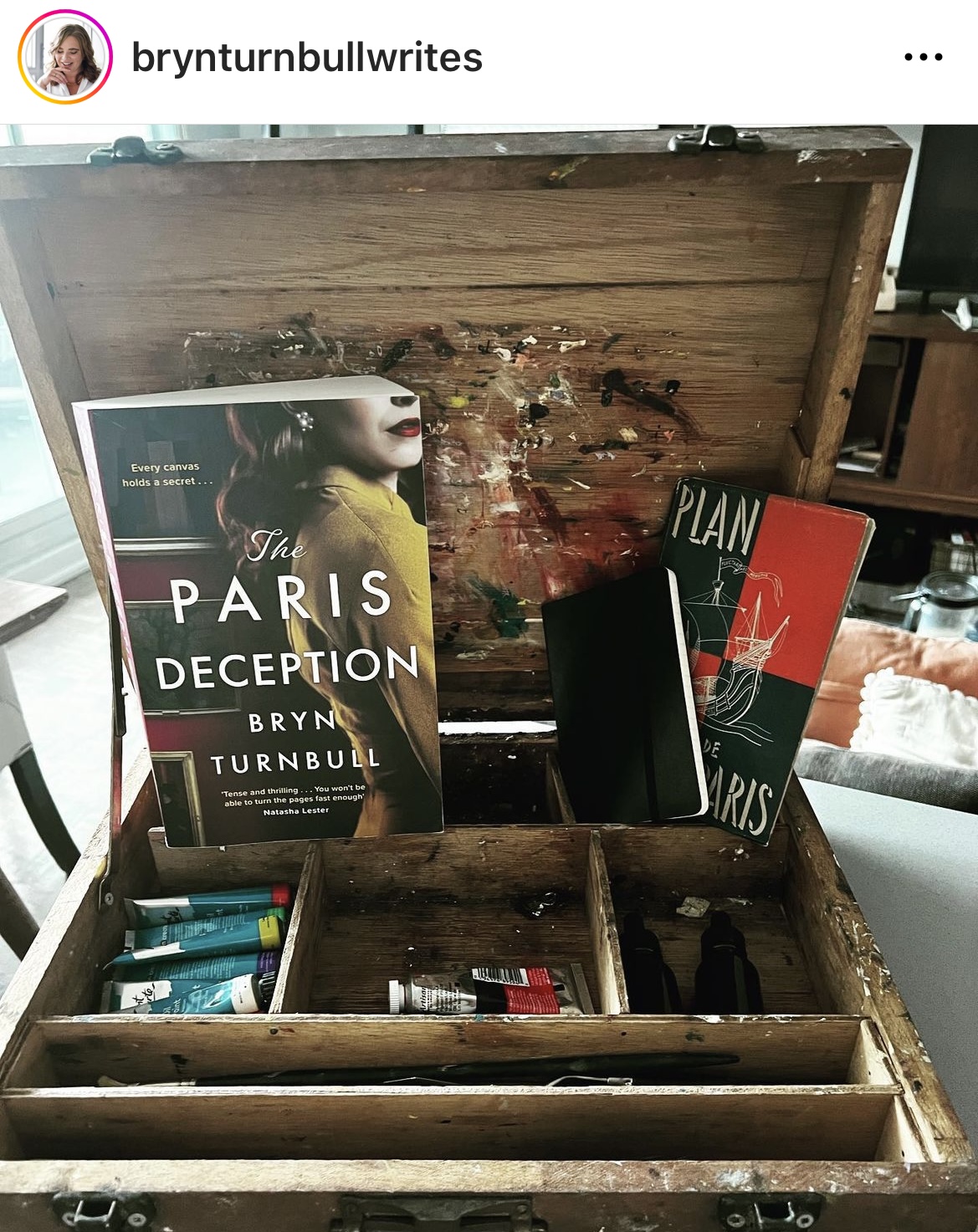
@brynturnbullwrites via Instagram
GWR: How did you start writing/become a writer?
BT: My family would tell you that I’ve always been a writer. I honestly don’t remember a time where I wasn’t jotting down a story or character ideas in some notebook or another. I became a writer in earnest in 2015, when I came across the person who would become the subject of my first novel, Thelma Furness. At the time I was working in corporate communications, and I felt so strongly about writing that novel that I quit my job and moved to Scotland for a year to write what became The Woman Before Wallis. The rest, as they say, is history.
GWR: Are you a pantser/gardner or a plotter/architect? What does your writing process look like?
BT: I’m a plotter, for sure—the first few months of my process involves creating long, elaborate Excel spreadsheets which break the book down scene by scene in as much detail as I can muster, then going back and refining those scene breakdowns so they flow together properly. I also do lots of research for my books, diving deep into the socio-political historical and context of my chosen setting month by month and year by year so my characters can play against that context properly.
GWR: Can you tell us about the research process for The Paris Deception—what did you enjoy most about it and was there anything you discovered that surprised you?
BT: This was such a fascinating book to research because not only was I putting my characters within a context I’d been wanting to write about for years—the impact of the Second World War on Europe’s art community—but also because I got to give my characters very specialized jobs: one is an art conservator, one is an art forger, and another is a champagne maker. Needless to say, I went down some great research rabbit holes with each of them: for my conservator character, Sophie, I was able to tour the laboratories of some incredible modern day conservators, and for Fabienne I was able to meet a real-life art forger who walked me through some of the methods they used to forge art. I was also able to travel to France to research this book, and spent days in the Jardin des Tuileries planning an art heist before heading to Reims to tour champagne houses… all in the name of research, of course!
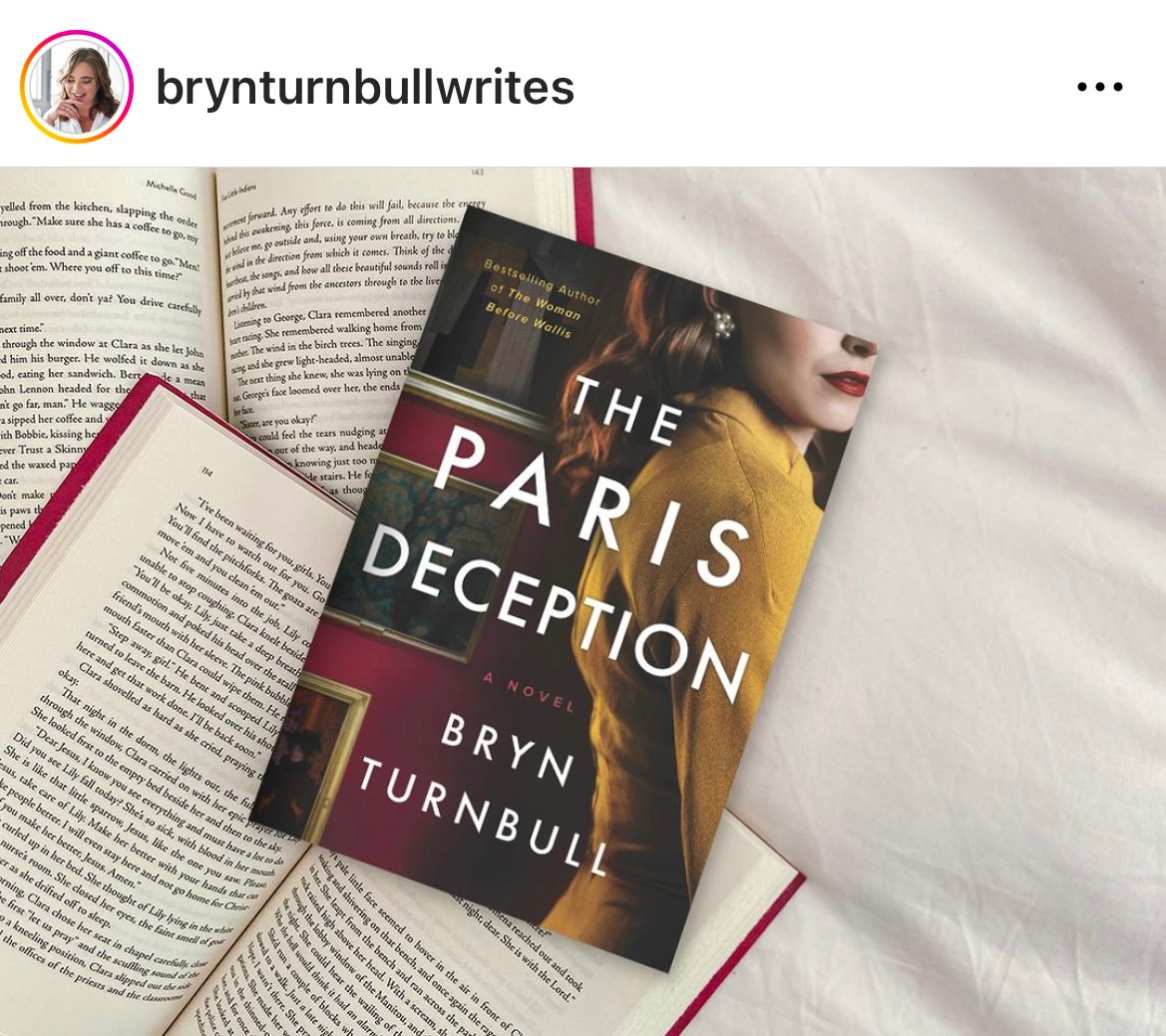
@brynturnbullwrites via Instagram
GWR: What was the genesis of the novel?
BT: The novel came out of a challenge set to me by my brother, who wanted me to write a book that he would like better than his favourite movie, The Thomas Crown Affair. Needless to say, it was a tall order, but the idea of writing a book about an art heist piqued my interest. I recalled the case of a forger in 1943 who sold a fake Vermeer to Hermann Goering in 1943, and the two ideas merged together in my mind: a book about an art heist, set during the Second World War.
GWR: What comes first for you—the overall idea or the characters?
BT: When I wrote my first two novels, the character came first, because both books were based on actual historical heroines. With this novel, the main characters are fictional so I built them around the book’s setting. I knew I needed a character with the kind of specialized skill set that would enable her to avoid being dismissed by the Germans when they take over the museum, so it felt appropriate to make Sophie an art conservator, and the idea of making her German—of making her a conscientious objector to Hitler’s regime, who feels a sense of responsibility to set things right in what way she could, felt like it would be an interesting dynamic to include in the novel. Fabienne was also born out of context: I needed a skilled artist with access to a different setting that would provide the backdrop for a compelling secondary storyline.
GWR: How did you balance crafting a good story against historical accuracy? Did you take any creative liberties?
BT: Historical fiction tends to lie somewhere along a spectrum between complete historical accuracy and complete fiction, and where possible I like to set my novels closer to the historical record than not. With this novel, I’ve put fictional characters—and a fictional mission—in an all too real historical context: the looting of priceless collections of art from Jewish families across Nazi-occupied Europe. The museum where the action takes place—the Jeu de Paume—was indeed used by a Nazi art commission called the ERR as a storehouse for plundered artwork, and as a gallery for high-ranking Nazis like Hermann Goering to select the choicest works to send into Germany.
The history of the Room of Martyrs, and of so-called “degenerate” art in Nazi-occupied territories is also sadly accurate. Many works of modern art by artists including Van Gogh, Picasso, Dali, Cezanne, Kirchner and Klee were either destroyed by the Nazis or exchanged with dealers who sold them on to clients who either didn’t know or care that the paintings had been stolen from their rightful owners.
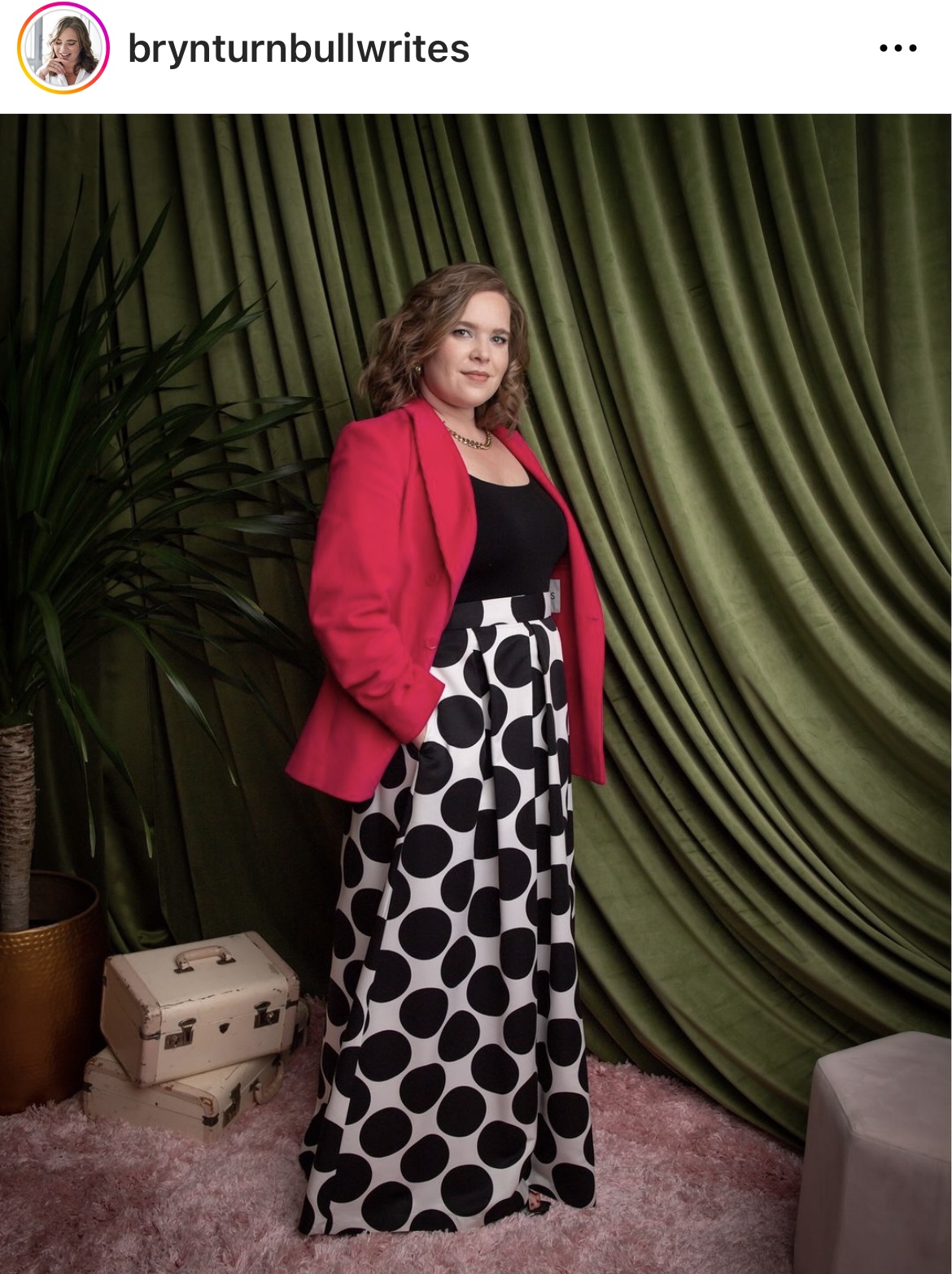
@brynturnbullwrites via Instagram
GWR: What made you decide to write the book from a dual point of view? Was it easier or more challenging to explore the parallel storyline?
BT: I loved writing from a dual perspective. I felt that having two main characters allowed me to open up the scope of the novel and explore different aspects of occupied France, as well as allowing me to layer in a few different emotional threads that would have been difficult to include with Sophie alone—she already had so much on her plate!
GWR: What do you hope readers will take away from The Paris Deception?
BT: When I wrote this novel I was fascinated by the notion of what resistance looked like for those who couldn’t or didn’t join the “capital-R” Resistance. With the benefit of hindsight, it seems so simple to say that if we were in occupied France we would do the right thing and stand up against tyranny, but not everyone could become a radio operator or blow up railway lines in the name of freedom. What did resistance look like on an individual level? How did people resist within their own sphere of influence?
I hope that people take away the idea that there are so many different ways to stand up for your principles, and to do the right thing—that individual resistance, small-scale resistance, can still make a meaningful difference.
GWR: Can you share what are you working on now?
BT: I’m moving a few decades forward in history (and a bit further northeast) to write about a couple that gets separated by the Berlin Wall.






